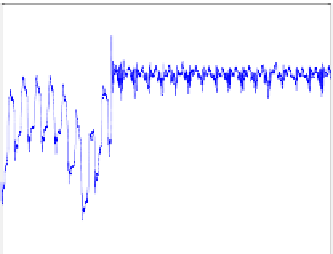Information Technology Reference
In-Depth Information
w
2
W
2
(
s
)
z
1
d
W
1
(
s
)
P
c
(
s
)
r
e
u
+
K
(
s
)
G
c
(
s
)
+
+
-
z
3
W
3
(
s
)
Fig. 6.16
Augmented plant for
H
∞
control synthesis
1.6
1.4
1.2
1
0.8
0.6
0.4
0.2
0
5
10
15
time (sec)
Fig. 6.17
Heart immobilization:
in vivo
results
In the heart-tool synchronization approach, taking into account the prior knowl-
edge of the heart motion has been proved to enhance the motion compensation ac-
curacy. Even if the results obtained by the active stabilizer are promising, we think
that they can be improved if a predictive control approach is used. As argued in the
beginning of this section, the disturbance induced by the heart motion can not be
directly measured, so future research could investigate the ways of estimating this
disturbance in order to make the use of predictive control possible.
6.6
Perspectives
An interesting alternative to CABG is angioplasty performed during percutaneous
coronary intervention (PCI). The goal is usually to bring the tip of a catheter at the
stenosis site using canulation techniques with femoral artery access. The inflation
of a balloon or even the implantation of a tubular mesh (a stent) can help expanding
the artery wall in order to reduce the stenosis. So many teams are currently working
on the development of active catheters able to navigate more easily through the




































Search WWH ::

Custom Search